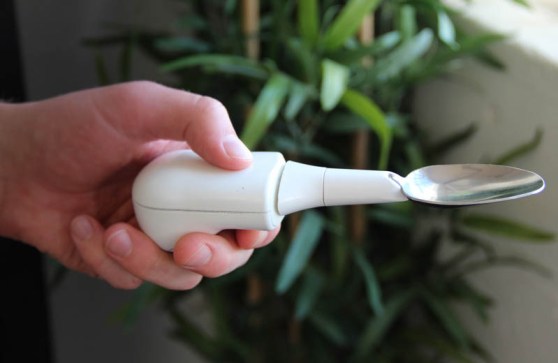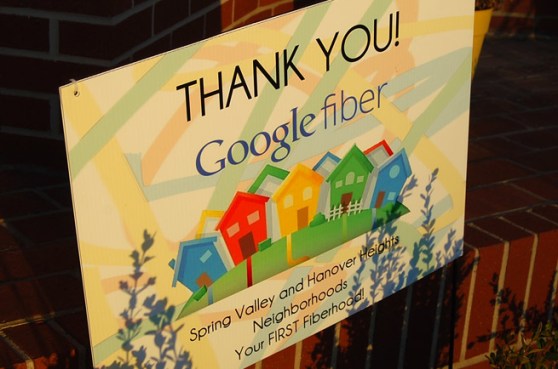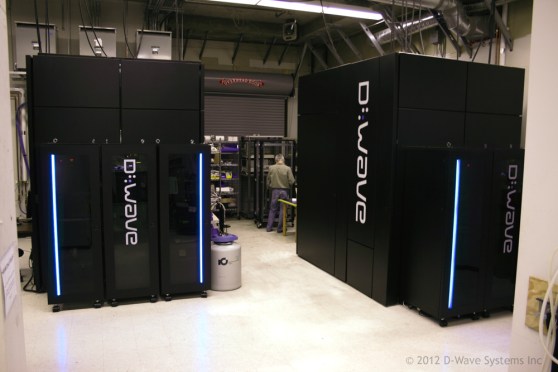Entrepreneurs talk a lot about innovation, but more often than not, “disruptive” ideas are just a slightly better version of something that already exists — or gimmicky apps that don’t innovate at all.
Every once in a while, we hear about technology that is genuinely making a difference in people’s lives. These ideas — and more importantly, the execution– have the potential to fill you with a sense of genuine awe.
For tech writers like yours truly, it’s nice to be reminded of the very real positive impact of technology.
This month, I asked my network for examples of awe-inducing innovation. Given all the BS in circulation, I narrowed down the final selections using the following strict qualifications:
- The product must actually exist and already bring real value to people — no futuristic stuff that will be meaningful someday.
- No startups in stealth mode or a movement that is still in its infancy, like solar planes and self-driving cars.
- Hype is fine by me, but not empty promises about curing cancer or solving global hunger.
- No ideas that are not backed by actual code, no matter how freaking cool they may seem.
I separated the technology into three distinct categories: mobile and gadgets; health and connectivity and cloud. I’m sure I’ve missed plenty, so please include your links and suggestions in the comment section below!
1. Thought-controlled computing

High level but hands-on
Our upcoming DevBeat conference, Nov. 12-13 in San Francisco, will have a lot more on this topic. Featuring hacker legends like Stallman, DHH, Rasmus Lerdorf, and Alex Payne, it’s a hands-on developer event packed with:
- workshops
- teck talks
- live Ask-Me-Anything
- hardware hacking
It’s all aimed at boosting your code skills, security knowledge, hardware hacking, and career development. Register now.
In Ontario, Canada, a group of researchers have invented a headset that lets you control almost anything using your mind. No, really. The interface of the device, the futuristic-sounding Muse by InteraXon, turns your thoughts into binary 1s and 0s.
The Muse headband won’t be in the hands of consumers until next year. But we still included InteraXon on our list, as the technology has already been working in practice for several years. During the 2010 Winter Olympics in Vancouver, InteraXon technology enabled visitors to control the lights on Niagara Falls, the CN Tower, and Canada’s Parliament buildings with their minds.
The Muse isn’t the only smart headset on the market. A San Jose-based company called NeuroSky recently raised yet more financing from a Japanese corporation. NeuroSky is best known for providing the sensor tech behind the MindWave, which can log into a computer using just your thoughts.
2. OpenROV: The open-source submarine
At TechShop, a hub of the maker movement in San Francisco, I was lucky enough to meet David Lang, an entrepreneur building a mini-submarine. The open-source robot, dubbed OpenROV, has been credited by the world’s press as the key to unlocking the Earth’s final frontier.
This may sound overblown, which we’re trying to avoid, but it’s warranted. What’s cool about OpenROV is that it’s an affordable alternative to subs like the Deep Sea Challenger, which took Oscar-winning filmmaker James Cameron to the deepest, darkest recesses of the Western Pacific. Environmentalists and marine archeologists are using OpenROV to discover shipwrecks in Cuba and spotlight pollution. Kids are using it to explore pond life in their backyards.
If this really piques your interest, you should come to our DevBeat conference next week! OpenROV’s founder will be giving a tech talk on being a hardware startup founder after a career in software.
Check out the video below to see how it works.
3. Google Glass
I have my qualms with Google Glass, particularly as a consumer device. Let’s face it: It’s not particularly fashionable — who would want to have a camera mounted to the side of their face?
That said, it’s already proving to be a useful tool for industry. Medical professionals are already using Google Glass to perform operations, teach, and train. The value is clear: It’s a hands-free device that doctors can use to record surgeries and consultations with patients. New applications for health care will be widely available in 2014 when Glass starts shipping.
Thanks for the suggestion Blake Robinson, the director of social strategy and development at Annalect; and Sachin Duggal, cofounder at Shoot.
4. Smarter identification
Wearable technology has generated a good deal of hype — and in a few cases, it’s warranted. Nymi, a smart wristband developed by researchers at the University of Toronto, connects your identity to your devices. The device has an in-built sensor, which authenticates identity through your electrocardiogram. In other words, the unique pattern of your heartbeat could unlock a laptop or the front door of your home.
Honorable mention goes to HabitID for how it accurately identifies people based on typing cadence. This provides a new way for large companies to protect their employees from hackers and identity fraud.
5. 3D printing

There are already dozens of uses for 3D printing technology, a hyped up technology that is the real deal. 3D printing is in the early days, but it’s already being used to print a fully functional SLR camera in 15 hours and for only $30 in parts, a hand glider, and cheap printer supplies.
One of the coolest examples we’ve seen of this technology in action is the NASA prototype of the 3D printed pizza. As we plan for longer space missions, this could prove particularly useful to keep an intrepid space explorer from going hungry. 3D printed prosthetics will restore your faith in humanity — check out this robohand, which could restore hand functionality to those afflicted with diseases like amniotic band syndrome. This condition causes children to be born without fingers and toes.
[youtube=http://www.youtube.com/watch?v=WT3772yhr0o&w=560&h=315]
>>Click through to the next page for life-saving innovation in health care >>
6. Genetic testing for pregnant women

In recent years, the cost of genome sequencing has plummeted. Already, we’re seeing medical technologies that can more accurately diagnose disease and help doctors prescribe more targeted treatment options.
A handful of Silicon Valley companies are developing genuinely groundbreaking technology for pregnant women or couples trying to get pregnant. With a blood sample, Counsyl can screen women for over 100 genetic conditions. After all, the more you know, the more options you have.
Natera‘s test helps women who have experienced miscarriages understand exactly why they happened. For pregnant women, Ariosa Diagnostics offers a noninvasive DNA test that detects common fetal diseases as early as 10 weeks into a pregnancy — it’s far less dangerous and more accurate than an amniocentesis.
These companies are already selling their genetic test to thousands of women all over the world.
7. A spoon for people with Parkinson’s disease

At Rock Health’s recent demo day, a new gadget from Lift Labs blew me away.
People with Parkinson’s Disease often find that tremors in their hands make it difficult to use utensils. This new spoon from Lift Labs counteracts the movements of a wavering grip, reducing shaking by 70 percent.
The technology sounds revolutionary, but its underlying tech is actually an extension of the image stabilization features in today’s cameras and smartphones, which compensate for natural hand jitters. Read our full story on the spoon here.
Check out the video below to see it in action.
[youtube=http://www.youtube.com/watch?v=fS01kn6YJ94&w=420&h=315]
8. Medic Mobile
Something as simple as feature phone can make a difference in the developing world. Medic Mobile is proving that the right tools — not the flashiest — can have the most impact.
Medic Mobile chief executive Josh Nesbit got inspired to start the company after a visit to Malawi in 2007, where he met community health workers who were walking 45 miles every week to hand-deliver updates on HIV patients living in remote villages. In a CNN op-ed, the Stanford University grad explained how he bridged that gap using SMS messaging and eventually started Medic Mobile.
Medic Mobile is working with mobile health partners developing tools like a simple SIM card application, which community health workers can use to track drug stocks and receive and provide real-time reports on disease. It’s already improving health care for hundreds of thousands of people in underserved rural communities.
Check out the founding story from Nesbit in the video below.
[youtube=http://www.youtube.com/watch?v=MEZZ138ZTYI&w=560&h=315]
9. Sensor networks for the elderly
It’s always heartwarming to hear about technology that helps our grandparents and the growing aging population. Some recent examples include SafetyFiled, a cloud storage system for seniors; and True Link Financial, a fraud blocker startup.
Most impressive of all is a service that caters to people who suffer from dementia and early stage Alzheimer’s disease but want to continue living independently. A wall-mounted tablet device is at the center of it the system — the device is connected to Skype, making it easy to check in with a carer living anywhere in the world. Sensors placed throughout the home are smart enough to set off an alarm when a front door is left open, and it provides spoken reminders about daily tasks.
This smart sensor system is already in over 1,000 homes in Europe, the BBC reports, and parts of it are being developed by health care technology company Abilia.
10. A blood test without bleeding
A company called Biosense has developed a simple portable device that can test for anemia without breaking the skin. In emerging nations, anemia is relatively easy to treat, but it’s difficult to diagnose. It affects millions of people and has led to roughly one million women and infant fatalities per year, according to recent research.
The founders of Biosense built an affordable device, the ToucHb, which is small enough to fit in a lunchbox. It is already in use all over India to test people for anemia. In 2008, the company received the Piramal Prize for democratizing health care in the region. The prize has also been awarded to Teach for India and the Gandhi Fellowship.
I guarantee that the TED talk delivered by Biosense cofounder Myshkin Ingawale will lift your spirits!
>>Turn the page for some cool stuff to keep us connected>>
11. Private spaceflight
No list of cool technology would be complete without a reference to SpaceX, Elon Musk’s private-sector spaceflight venture.
In 2008, SpaceX launched a payload into orbit using its Falcon 1 rocket. In 2009, the company lofted a commercial payload into orbit, making it the first to do so using a privately funded rocket. In 2010, SpaceX successfully launched its first Falcon 9 rocket into orbit.
Check out one of the videos below from the SpaceX channel of the Dragon being attached to the International Space Station. We love that the highest-ranking comment gives thanks to Musk and SpaceX for “making me dream.”
[youtube=http://www.youtube.com/watch?v=07umAHbXYyk&w=560&h=315]
12. Indoor Positioning
Last year, I reported that the time had finally come for indoor location technology. Signals from GPS satellites don’t easily penetrate inside buildings, but programmers have figured out new ways to work around that. Fellow enterprise writer Arik Hesseldahl referred me to a company called IndoorAtlas, which is based in Finland. It tracks magnetic fields found in the steel casing of most modern buildings to discern your location to a precision of about three meters.
Retailers can use this technology to advertise to shoppers when they’re standing in the fruit aisle or contemplating a new pair of jeans. Another indoor location startup called WiFiSLAM (which was recently acquired by Apple) is working with developers to serve museum-goers information at the exact moment when they’re standing in front of a painting. It may seem a bit creepy, but you have to admit, it’s pretty darn cool. Parents will have an easier time finding lost kids at a mall.
[youtube=http://www.youtube.com/watch?v=gtjBMZTW5Fg&w=560&h=315]
13. ‘Welcome to the Fiberhood’

Google is a master of all things innovation, with its secret research lab, Google X. Chief executive Larry Page often refers to the company’s most ambitious ideas as “moon shots.”
The search giant has plenty to gain from increasingly Internet access in emerging nations and rural areas, but so do the world’s poorest people. Google’s most recent initiatives include Google Fiber, which offers Gigabit Internet speeds to whole cities — up to 100 times faster than the average broadband connection. Google Fiber is designed for rural and residential areas and is already installed in a handful of places. In particular, it will benefit schoolchildren, many of whom do not have access to fast Internet.
The Google Wi-Fi balloon, aptly dubbed Project Loon, is another bold plan to bring the Internet to huge numbers of people, via thousands of solar-powered, high-pressure balloons floating some 60,000 feet above Earth. The project is already in test-phase, with balloons recently spotted by state police in rural Kentucky.
14. “Cloud paging” technology
I’ve never seen such a headline from a tech journalist: “WE’RE BLOWN AWAY: This Startup Could Literally Change The Entire Software Industry,” especially such a reliable one. Business Insider‘s Julie Bort has a point: Numecent is seriously cool. The technology, called CloudPaging, instantly takes any software — even an entire operating system — and puts it in the cloud.
We’re already seeing some unexpected and promising use-cases for this technology. In the U.K., it’s being used by students at colleges and universities, who want to deploy Windows applications on personal laptops. Blind and deaf students can now work from home, rather than having to find the physical machine on campus with Microsoft’s assistive learning application installed.
15. Quantum Computing and D-Wave

Above: If D-Wave looks cool, that’s because it actually is!
The word “quantum” makes anything sound like its shrouded in mystery and danger. Can you even begin to imagine what a “Quantum pizza” might look like? In the case of D-Wave, computer that claims to be 3,600 faster than a regular computer, it served to inspire a great deal of media attention and hype.
However, even the most nuanced and informative story I could find on D-Wave, and quantum computing didn’t entirely discount its cool factor. Researchers have found myriad use-cases where D-Wave chips were able to correct solutions to some problems at breakneck speeds. The company is slowly winning over critics in the scientific and academic communities.
Earlier this year, Google partnered with Canada-based D-Wave to explore new applications. One strong use-case is to use the D-Wave to explore genomics data, and analyze the root causes of disease.
Hat tip for the suggestion to Matt Ocko, investor at Data Collective and Nick Pinkston, a hardware entrepreneur.
What technology has most inspired you of late? Let us know in the comments section below.



